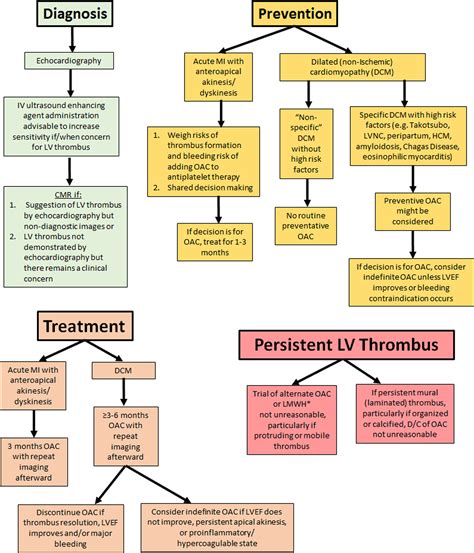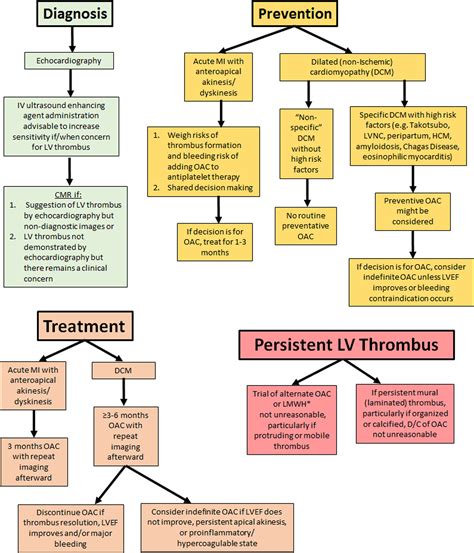causes of lv thrombus | Lv thrombus prevention guidelines causes of lv thrombus The rate of LVT formation after AMI is thought to be declining due to the use of better therapies and percutaneous coronary intervention used . See more A cascarón (plural cascarones, without accent mark; from Spanish cascarón, "eggshell", the augmentative form of cáscara, "shell") is a hollowed-out chicken egg filled with confetti or small toys. Cascarones are common throughout Mexico and are similar to the Easter eggs popular in many other countries.
0 · risk factors for Lv thrombus
1 · left ventricular thrombus patient education
2 · left ventricular thrombus anticoagulation
3 · left ventricular apex thrombus
4 · guidelines for Lv thrombus anticoagulation
5 · Lv thrombus prevention guidelines
6 · Lv thrombus duration of anticoagulation
7 · Lv left ventricular mural thrombus
The average hourly pay for a Computer Operator in San Diego, California is $24.98. Visit PayScale to research computer operator hourly pay by city, experience, skill, employer and more.
The primary risk of LVT is the occurrence of cardiac embolism, [1] [4] in which the thrombus detaches from the ventricular wall and travels through the circulation and blocks blood vessels. Blockage can be especially damaging in the heart or brain ( stroke ). See moreLeft ventricular thrombus is a blood clot (thrombus) in the left ventricle of the heart. LVT is a common complication of acute myocardial infarction (AMI). Typically the clot is a mural thrombus, meaning it is on the wall of the . See more
After an AMI, people should be treated to prevent LVT formation. Aspirin plus an oral anticoagulant such as warfarin are suggested for individuals at risk for thromboembolic . See moreThe rate of LVT formation after AMI is thought to be declining due to the use of better therapies and percutaneous coronary intervention used . See more
LVT occurs most often during the first 2 weeks following AMI. AMI patients most at risk display the 3 characteristics of Virchow's triad See moreEchocardiography is the main diagnostic tool for LVT. A distinct mass is visible in the left ventricle. Computed Tomography and See moreSystemic anticoagulation is considered first-line medical therapy for LVT, as it reduces the risk of systemic embolism. There are also . See more Pathophysiology. A commonly accepted paradigm (based on Virchow’s triad of thrombogenesis) posits the pathogenesis of LV thrombus as occurring as a result of the interplay of 3 factors: (1) stasis attributable to .
Left ventricular (LV) thrombus may develop after acute myocardial infarction (MI) .
The primary risk of LVT is the occurrence of cardiac embolism, [1] [4] in which the thrombus detaches from the ventricular wall and travels through the circulation and blocks blood vessels. Blockage can be especially damaging in the heart or brain ( stroke ).
Pathophysiology. A commonly accepted paradigm (based on Virchow’s triad of thrombogenesis) posits the pathogenesis of LV thrombus as occurring as a result of the interplay of 3 factors: (1) stasis attributable to reduced ventricular function, (2) endocardial injury, and (3) inflammation/hypercoagulability (Figure 1). Left ventricular (LV) thrombus may develop after acute myocardial infarction (MI) and occurs most often with a large, anterior ST-elevation MI (STEMI). However, the use of reperfusion therapies, including percutaneous coronary intervention and fibrinolysis, has significantly reduced the risk.Left ventricular (LV) thrombus is a feared complication of LV dysfunction associated with high rates of systemic embolism, morbidity, and mortality. Traditionally, LV thrombus has been associated with acute myocardial infarction (MI). The following are key points to remember about this scientific statement from the American Heart Association (AHA) for the management of patients at risk for and with left ventricular (LV) thrombus: Decisions concerning the diagnosis, prevention, and treatment of LV thrombus remain challenging.
Although the incidence of left ventricular (LV) thrombus after acute myocardial infarction (AMI) has substantially declined in recent decades largely caused by early primary percutaneous coronary intervention (PCI) and the adjunctive antithrombotic regimen, LV thrombus remains an important complication of AMI given the high risk for subsequent . Thrombus persistence was associated with a higher risk of HF rehospitalization. Thrombus progression was associated with poor prognosis, with per unit increment in square-root-transformed thrombus-area resulting in a 1.0691-fold increase in MACE risk and a 1.0546-fold increase in death risk. LV thrombus is not an uncommon complication of acute MI, and is associated with systemic thromboembolism. Contemporary epidemiologic data suggest the incidence of LV thrombus, detected using optimal imaging modalities, may be as high as 15% in patients with ST-segment elevation MI (STEMI) and up to 25% in patients with anterior MI.Importance Left ventricular (LV) thrombus is a complication of acute myocardial infarction (MI) and is associated with systemic thromboembolism. With randomized clinical trials investigating the optimal antithrombotic regimen in patients with MI who require concomitant chronic anticoagulation and with the emergence of the direct-acting oral anticoagulants, treatment .
Left ventricular (LV) regional wall akinesia and dyskinesia resulting in blood stasis, prolonged ischaemia leading to subendocardial tissue injury with inflammatory changes and a hypercoagulable state, are consistent with Virchow's triad, resulting in LV thrombus formation.The primary risk of LVT is the occurrence of cardiac embolism, [1] [4] in which the thrombus detaches from the ventricular wall and travels through the circulation and blocks blood vessels. Blockage can be especially damaging in the heart or brain ( stroke ). Pathophysiology. A commonly accepted paradigm (based on Virchow’s triad of thrombogenesis) posits the pathogenesis of LV thrombus as occurring as a result of the interplay of 3 factors: (1) stasis attributable to reduced ventricular function, (2) endocardial injury, and (3) inflammation/hypercoagulability (Figure 1).

Left ventricular (LV) thrombus may develop after acute myocardial infarction (MI) and occurs most often with a large, anterior ST-elevation MI (STEMI). However, the use of reperfusion therapies, including percutaneous coronary intervention and fibrinolysis, has significantly reduced the risk.Left ventricular (LV) thrombus is a feared complication of LV dysfunction associated with high rates of systemic embolism, morbidity, and mortality. Traditionally, LV thrombus has been associated with acute myocardial infarction (MI). The following are key points to remember about this scientific statement from the American Heart Association (AHA) for the management of patients at risk for and with left ventricular (LV) thrombus: Decisions concerning the diagnosis, prevention, and treatment of LV thrombus remain challenging.
Although the incidence of left ventricular (LV) thrombus after acute myocardial infarction (AMI) has substantially declined in recent decades largely caused by early primary percutaneous coronary intervention (PCI) and the adjunctive antithrombotic regimen, LV thrombus remains an important complication of AMI given the high risk for subsequent . Thrombus persistence was associated with a higher risk of HF rehospitalization. Thrombus progression was associated with poor prognosis, with per unit increment in square-root-transformed thrombus-area resulting in a 1.0691-fold increase in MACE risk and a 1.0546-fold increase in death risk.
risk factors for Lv thrombus
left ventricular thrombus patient education
LV thrombus is not an uncommon complication of acute MI, and is associated with systemic thromboembolism. Contemporary epidemiologic data suggest the incidence of LV thrombus, detected using optimal imaging modalities, may be as high as 15% in patients with ST-segment elevation MI (STEMI) and up to 25% in patients with anterior MI.
Importance Left ventricular (LV) thrombus is a complication of acute myocardial infarction (MI) and is associated with systemic thromboembolism. With randomized clinical trials investigating the optimal antithrombotic regimen in patients with MI who require concomitant chronic anticoagulation and with the emergence of the direct-acting oral anticoagulants, treatment .

left ventricular thrombus anticoagulation
left ventricular apex thrombus
guidelines for Lv thrombus anticoagulation

Paris Commune: The revolt dividing France 150 years on. 17 March 2021. By Hugh Schofield,BBC News, Paris. Getty Images. The Paris Commune lasted until late May 1871, culminating in a so-called.
causes of lv thrombus|Lv thrombus prevention guidelines




























